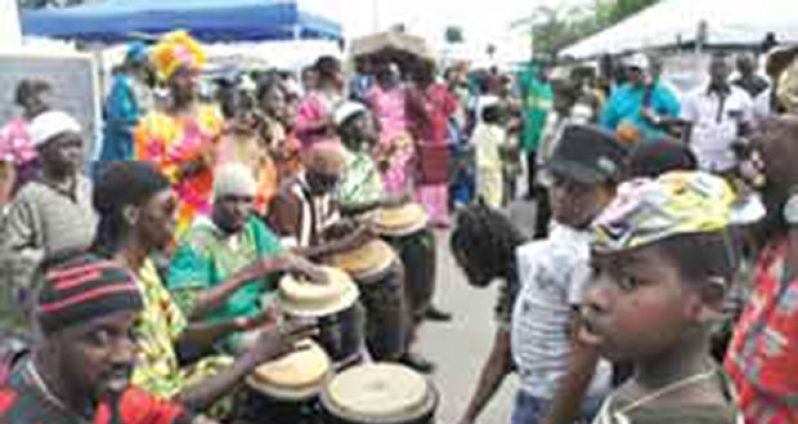By Vanessa Braithwaite
AS Guyana celebrates 178 years since the abolition of slavery, some villages, previously plantations, find such a celebration mandatory. One such village is Bagotville, West Bank Demerara.This village of a mere three square miles — bordered to the east by the Demerara River, to the west by La Rouse Adventure, to the north by Canal Number 1 Polder, and to the south by Plantation Nismes — is home to almost two thousand villagers. Formerly a coffee plantation called Mindenburg, which was owned by a Mr Bagot, this piece of real estate was generously given over to the ex-slaves after the abolition of slavery; and they renamed it “Bagotville” in 1848.

Bagotvillians take pride in Emancipation celebrations, as it is believed that they are all descendants of the slaves who once resided there. One of those villagers, Ashton Crawford, who plays an integral role in these celebrations, related that Bagotville is the first village to commemorate Emancipation.
“We had our first Emancipation celebration in 1952. That was headed by the late Mr. Jake Isaac Crooker… Back then it lasted for nine days, or as we would normally call it, ‘nine night’,” Crawford related.
Llewelyn Cyrus, a young Bagotvillian, remembers being told stories of the African slaves who toiled to develop the village, and so he proudly participates in these celebrations yearly.
“I remember my grandmother Natalie Washington, who was a village leader, would tell us stories of how the slaves dug the canal that runs through the village; and how they worshipped under the tamarind tree that still stands today, or rested under it while traversing in and out of the village. I often go under that tamarind tree and envision it,” the young man said.
Their various expressions of remembrance and celebration that began in Bagotville were copied by other plantation villages, such as Hopetown, Belladrum and Ithaca. Every year, these villages remember the struggles of their African ancestors, and celebrate them by hosting soirees, libation ceremonies, thanksgiving services, and folk festivals.
Celebrations at Bagotville begin at the village church, where a thanksgiving service is held at 18hrs on July 31. The service continues until 22hrs, when the villagers are sent home to prepare for the second leg of the celebrations. Many wait in high anticipation for the libation ceremony which takes place at the village koker. They dance and mimic the sounds of the drums and other musical instruments, awaking neighbouring villages as they make their way to the koker. Upon arriving there, they sing to African rhythms as they “invite the ancestors to join the celebrations”.
When it is certain that the ancestors are “within their midst”, the celebrants move over to the community centre for a grand enjoyment. At this time, the centre is filled with spectators, dancers, drummers and singers, as well as children. At about 18hrs, the libation ends, but not the Emancipation celebrations!
A packed programme, prepared weeks in advance, is started at about noon. The villagers gather at the centre once again to witness the traditional concert. This includes African dances and songs; skits; speeches; and most importantly, the story telling.

The audience is told of the post-Emancipation period, when the slaves commenced subsistence farming to provide for themselves, selling the remaining produce. The women got involved in hat-plaiting and other forms of craft to supplement the agricultural production.
African delicacies are also displayed to entice the guests who may have journeyed from the city to experience the celebrations. One of those delicacies is “Shine rice”, prepared “just the way the slaves did it”. When the slave masters gave their slaves discarded parts of meat, including the feet, back giblet and neck of the chicken and tail of the pig, the slaves would fix “a lovely fireside meal” with their gift. That dish was given the name “Shine rice” because it lacked the necessary ingredients for a nutritious meal.
From its humble beginnings, Bagotville has developed economically, socially, spiritually, and physically; and can now boast of producing doctors, lawyers, teachers and other professionals, who all live in harmony and continue to remember their tradition and the struggles of their ancestors, not only on August 1, but every day of the year.



.jpg)








